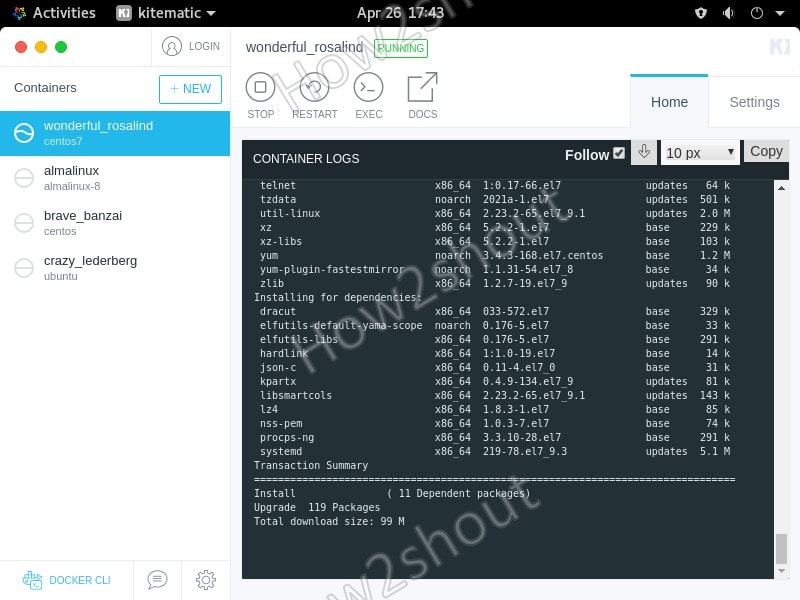


Once you have Docker installed, you’ll be able to easily build, ship, and run your applications on your machine. Installing Docker on CentOS is a simple process that can be completed in just a few steps. Additionally, you can use the “docker stop” command to stop a running container and the “docker rm” command to remove a stopped container. You can also use the “docker ps” command to see a list of all running containers and their status. It also maps port 80 on the host to port 80 in the container, which will allow you to access the nginx web server from your host machine. This command will run the nginx image in detached mode, which means it will run in the background. If you’re using a physical machine, you’ll need to have the root password. If you’re using a virtual machine, you can usually gain root access by logging in as the administrator. The second thing you’ll need is root access to the machine. If you don’t have one, you can easily set one up using a virtual machine or by installing CentOS on a physical machine. First, you’ll need to have a machine running CentOS. Prerequisitesīefore we get started with the installation process, there are a few things you’ll need to have in place. We’ll start by going over some prerequisites and then move on to the actual installation process. In this guide, we’ll go over how to install Docker on a CentOS machine. This makes it easy to run the application on any machine, regardless of whether or not the dependencies are already installed. It allows developers to package up an application with all of the parts it needs, such as libraries and other dependencies, and ship it out as one package. Docker is a powerful platform for building, shipping, and running distributed applications.


 0 kommentar(er)
0 kommentar(er)
